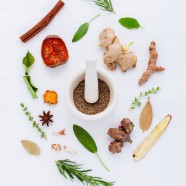
Glaucoma is one of the more serious ailments of the eye, since it causes permanent visual loss as a result of rising pressure within one or both eyes. Glaucoma is the second leading cause of blindness affecting More than three million Americans are living with glaucoma, 2.7 million of whom—aged 40 and older—are affected by its most common form, open-angle glaucoma. Blindness or low vision It is usually seen in people over age forty and is more common in women than in men. There are two forms, one which develops suddenly with a great deal of pain, and another which develops slowly and rather inconspicuously.
The number of people with glaucoma worldwide will increase to 111.8 million in 2040 These estimates are important in guiding the designs of glaucoma screening, treatment, and related public health strategies. Ophthalmology 2014;121:2081-2090 ª 2014 by the American Academy of Ophthalmology. Supplemental material is available at www.aaojournal.org
The Two Forms of Glaucoma
In the acute form, there are warning symptoms just before an attack. Foggy, blurred vision and the appearance of colored halos around lights are typical. The severe headaches and eye pain that follow are sometimes mistaken for acute abdominal problems because of the associated nausea and vomiting from the severe pain. In this form, one eye hurts, causing throbbing either behind or above the eye, with sensitivity to light, tearing and extreme redness. The eyeball is very hard compared to the unaffected eye. This form of glaucoma occurs repeatedly in less extreme forms, so blurred vision eye pain should always be assessed professionally. If symptoms suggest an acute form as described above, it should be treated as a medical emergency.
The second type of glaucoma, which typically affects both eyes, is more difficult to recognize because the changes in vision begin slowly. Typical signs are blurring in the periphery and blank spots. The visual changes become more apparent if one eye is closed, since the two eyes compensate for one another. Recurring headaches, sore eyes and a repeated attempt to find new glasses for blurred vision can be misinterpreted. This slowly progressing glaucoma is serious because the lost vision can never be regained.
Causes
Glaucoma occurs when the fluid which normally fills and drains from the eyeball builds up as a result of poor drainage or increased production. The resulting increase in eye pressure can damage the optic nerve responsible for vision. If this develops quickly, it causes severe pain and sudden changes to vision. This is more likely to occur if the pupil is widened for long periods from darkness or medication. Stress often triggers the acute attack, and women over thirty are more prone.
Chronic glaucoma is most common in those over sixty-five. If glaucoma develops slowly, the symptoms are fewer and less obvious. This chronic and most common type is thought to develop as a result of metabolic changes and accumulation of wastes associated with aging. Susceptibility to glaucoma also increases with other eye illnesses, including cataracts and eye injuries. Certain prescription medications for depression and high *blood pressure increase susceptibility, as does cortisone. Infants are not usually affected by glaucoma, except as a rare birth defect.
Nutritional Approach
As far as diet is concerned, the isolation and elimination of food allergies helps prevent the excessive fluid retention in the body. Studies have shown that coffee can produce a thirteen percent reduction in retinal blood flow. Avoid caffeine from any source including chocolate, soft drinks, coffee, and alcohol, salt and other stimulants.
Foods which are high in vitamin C, rutin and other bioflavonoids, vitamin A, choline and B vitamins can help. These include chrysanthemum tea, mint, oyster shell powder, mulberries, black sesame seeds, lycium fruit, grapefruit, lemons, oranges, carrots, beets, beet tops, spinach, parsley, endive and celery. These foods can also be juiced and consumed several times each day.
Plenty of fresh, raw blueberries and cherries are an effective dietary remedy for glaucoma. They are a rich source of the bioflavonoid anthocyanidin, which fights the deterioration of collagen tissue in the eye. Eat two to four ounces up to three times daily. These brightly colored fruits are also an excellent source of vitamin C, which works with anthocyanidin to maintain collagen structure, and vitamin A, an essential nutrient for eye tissue health.
Since glaucoma is associated with anxiety, ensure adequate intake of the vitamin B complex, which increases resistance to stress. Whole grains, including brown rice, and plenty of vitamin-rich green, leafy vegetables such as spinach, broccoli and kale are good sources of B vitamins.
Water, pure or in the form of fruit and vegetable juices and broths, is needed by the body to keep tissues supple and flush toxins out of the system. This is especially important for the eye lens tissues in which circulation is slower. Tap water is likely to contain particles of inorganic minerals which can he deposited in the eye lens, eventually blocking normal fluid flow. A daily glass of fresh carrot juice, rich in vitamin A, will naturally promote eye health.
Effective Supplementation
Besides the recommendations below, a diet of whole foods should be followed for optimal health. Vitamin C has been used successfully to reduce internal eye pressure within one week or less, but the dosage is highly individual and must he adjusted accordingly. Bioflavonoids are also recommended to improve the use of vitamin C by the body.
The bioflavonoid rutin is most effective, and should he taken with vitamin C. The dosages for all these nutritional supplements should be based on biochemical individuality. None of these natural substances interfere with the conventional treatments of glaucoma and can be used as effective complementary medical therapies.
Iodine drops: Simply because our thyroid gland is involved in all aspects of our body, TSH cannot be made without iodine daily. Adults take 5-6 drops 3 times a day on the tongue which will also ward off all infections. Bottles typically recommend 1 drop 3 times per day – not enough. For much more info on thyroid health, pick-up my book ‘Reverse Thyroid Disease Naturally’.
Dosages:
• Vitamin C, with bioflavonoids, 1,000 mg three to five times daily
• Rutin, 250 mg
• Green food supplement, 1—3 tsps.
• Wild salmon oil or halibut liver oil (for vitamin A content), 2 capsules 2 times a day
• Vitamin B complex, 50—100 mg several times daily (Injections of vitamin B complex have been reported to be especially effective in glaucoma cases associated with stress.)
• Vitamin B12, 1,500 mcg or more in oral or injected form may have a protective effect on the optic nerve and prevent visual loss in glaucoma. One study showed that people who took 1,500 mcg daily had a much lower visual loss. Vitamin B12 protects the myelin sheath around the optic nerve.
• Choline, 1,200—7,200 mg also needed for brain function.
• Magnesium, 500 1,000 mg (NB: this is one mineral which is more effective when injected IM or IV since high doses taken orally often produce diarrhea.)
• Bioflavonoids other than rutin (hesperidin, catechin, quercetin, pycnogenol, grape seed
extract) 5,000 mg or more daily. Quercetin, a bioflavonoid found in red onions, prevents damage of fat tissue in the eyes from UV light. It also inhibits histamine release and relaxes the smooth muscles of blood vessels.
• Vitamin E, with mixed tocopherols, 400 I U or more
• Selenium, 200 mcg daily; selenium is a vital antioxidant which protects against free-radical damage. Vitamin E and selenium act together to maintain a healthy heart, liver and eyes and for converting T4 to its active form T3.
• Chromium, 1,000 mcg daily lowers lipid levels in the body and increases the levels of good cholesterol (HDL). Chromium may be especially important in those using the drug Timoptic or other beta-blockers because Timoptic can increase the levels of lipids and lower the levels of HDL.
• N-acetyl-cysteine, 500 mg three times daily. Selenium and vitamin B2 (riboflavin) stimulate the production of glutathione, a power antioxidant that protects retinal cells from UV radiation.
Natural and Herbal Solutions
• To improve collagen metabolism, capillary strength and lower inner-eye pressure levels, take 1 tbsp. of vitamin C-rich rose hip juice daily.
• Horsetail strengthens connective tissue. Take 1 tbsp. of horsetail juice daily for two weeks.
• Wash the eyes regularly with an eyebright infusion. Take out any particles by putting the infusion through a muslin cloth,
• Germanium and aloe vera can be helpful.
• Avoid licorice and anything containing high amounts of niacin.
• Eyebright, fennel, chamomile and Essiac herbal teas may be helpful.
• Curcumin, the yellow pigment of turmeric (Curcuma longa), is primarily an anti-inflammatory agent comparable to cortisone, ibuprofen and phenylbutazone; it has also been reported to be effective as a cancer preventive agent as well as an antioxidant comparable in activity to vitamins C and E.
• Forskolin has been shown to have therapeutic effects in the treatment of high blood pressure, asthma, congestive heart disease and glaucoma. It helps improve circulation due to its vasodilating effects.
• Bilberry, 1,000 mg daily. Used in Europe for many eye disorders including cataract, glaucoma, macular degeneration, retinitis pigmentosa and diabetic retinopathy. It contains anthocyanidins which help stabilize collagen, increase intracellular vitamin C levels and decrease capillary fragility. Studies have also shown that bilberry decreases platelet aggregation, as does aspirin, and reduces high blood sugar levels. Bilberry works as an antioxidant in the eyes and prevents further damage from glaucoma.
• Ginkgo biloba extract, 250 mg three times daily has been used primarily in the treatment of cerebral vascular insufficiency, poor memory, depression, impotence and low energy. Ginkgo improves retinal circulation and has a protective effect against free radicals and thus helps prevent visual loss.
Other Therapies
• Eliminate stressful situations.
• Keep a balanced lifestyle including exercise and relaxation periods.
• Regular, hot foot baths aid other therapies.
• Regular, cold leg wraps are also helpful; keep warm in bed for thirty minutes.
• Do not carry anything heavy.
• In the case of acute glaucoma, effective treatment must begin within twelve to forty-
• Eye exercises can be helpful (see *eye problems).
• Prolonged reading, television watching, tobacco smoke exposure and other eye stressors should be avoided.
*Glaucoma Reflexology – Work on the reflexes for the eyes, ears, neck and kidney.
• Aerobic exercise (walking about 30 60 minutes daily) has been shown to reduce pressure in the eye when compared to previously sedentary glaucoma patients. Aerobic exercise produces the same pressure lowering effects as the drug Timoptic.
• Avoid tobacco smoke. Studies show that there is an increase in risk of developing glaucoma by smokers. Smoking a cigarette can raise pressure in the eye. Nicotine has been shown to reduce retinal blood flow by sixteen percent.
• UVA and blue violet sun rays increase the risk of developing free radicals which increase the risk for developing glaucoma. A good pair of sunglasses can block 100 percent of UVA and UVB and at least eighty-five percent of blue violet sun rays.
Copyright © 2020 – All Rights Reserved – Michelle Honda Ph.D.
Announcement
Look for my new forthcoming books “Reverse Depression Naturally” (Spring 2020) “Reverse Inflammation Naturally” (May 31, 2017) “Reverse Thyroid Diseases Naturally” (June 2018) “Reverse Alzheimers/Dementia Naturally” (Nov.2018) “Reverse Heart Disease Naturally” (Jan.31, 2017) and “Reverse Gut Diseases Naturally Nov. 2016
Where to Purchase:
Reverse Gut Diseases Naturally Nov. 2016
Reverse Heart Disease Naturally Jan. 2017
Reverse Inflammation Naturally May 2017
Reverse Thyroid Disease Naturally June 28/2018
Reverse Alzheimers Disease Naturally Nov. 2018
Reverse Depression Naturally Spring 2020
Hatherleigh Press Page Buy Book RGDN
Local Book Stores in US and Canada
Disclaimer
While close attention was given to the accuracy of information in this article, the author accepts neither responsibility nor liability to any person with respect to injury, damage, loss or any circumstances involving alleged causes directly or indirectly related to the information in this article. The sole purpose is to educate and broaden ones awareness. This information is not meant to replace medical advice or services provided by a health care professional.





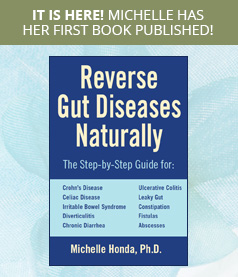

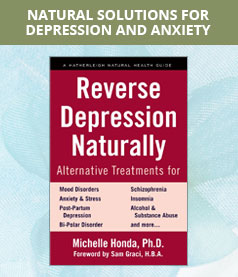
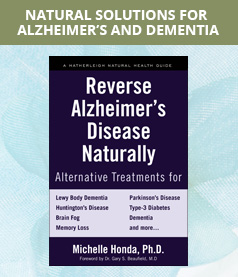
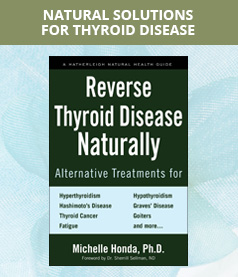

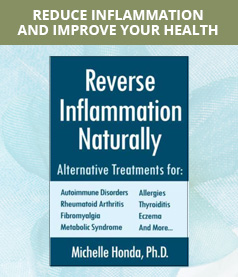
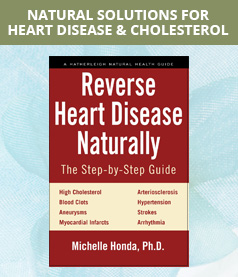
Follow Us!